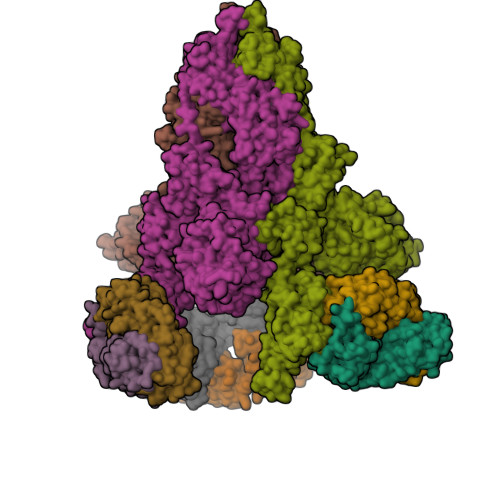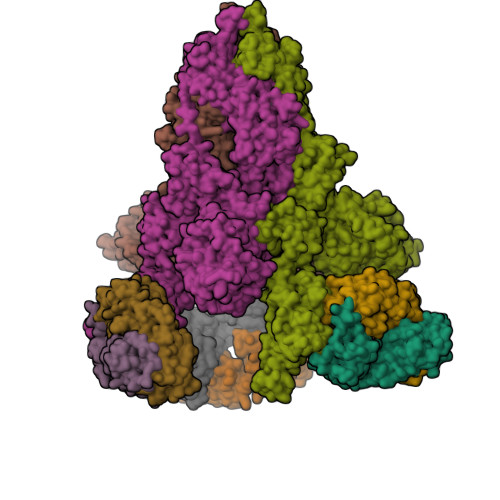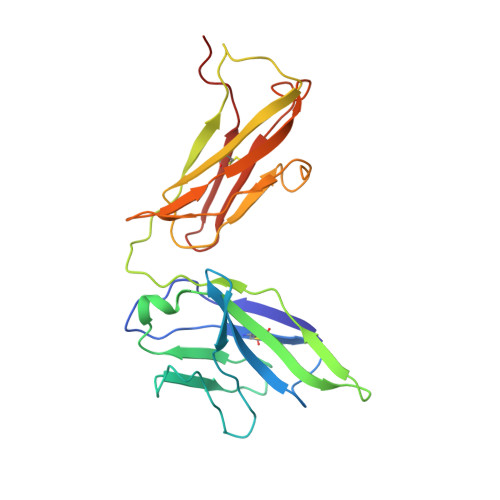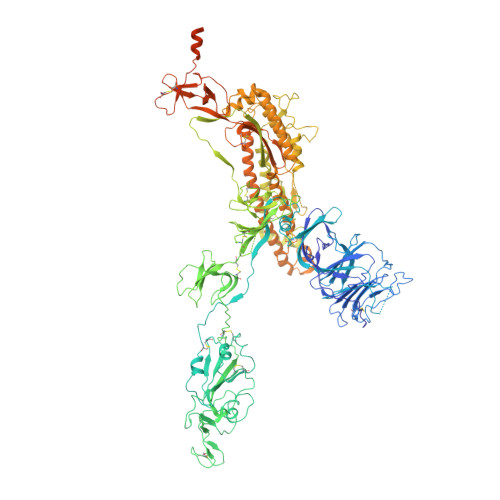Development and structural basis of a two-MAb cocktail for treating SARS-CoV-2 infections.
Zhang, C., Wang, Y., Zhu, Y., Liu, C., Gu, C., Xu, S., Wang, Y., Zhou, Y., Wang, Y., Han, W., Hong, X., Yang, Y., Zhang, X., Wang, T., Xu, C., Hong, Q., Wang, S., Zhao, Q., Qiao, W., Zang, J., Kong, L., Wang, F., Wang, H., Qu, D., Lavillette, D., Tang, H., Deng, Q., Xie, Y., Cong, Y., Huang, Z.(2021) Nat Commun 12: 264-264
- PubMed: 33431876
- DOI: https://doi.org/10.1038/s41467-020-20465-w
- Primary Citation of Related Structures:
7DCC, 7DCX, 7DD2, 7DD8, 7DDD, 7DDN, 7DK4, 7DK5, 7DK6, 7DK7 - PubMed Abstract:
The ongoing pandemic of coronavirus disease 2019 (COVID-19) is caused by severe acute respiratory syndrome coronavirus 2 (SARS-CoV-2). Neutralizing antibodies against SARS-CoV-2 are an option for drug development for treating COVID-19. Here, we report the identification and characterization of two groups of mouse neutralizing monoclonal antibodies (MAbs) targeting the receptor-binding domain (RBD) on the SARS-CoV-2 spike (S) protein. MAbs 2H2 and 3C1, representing the two antibody groups, respectively, bind distinct epitopes and are compatible in formulating a noncompeting antibody cocktail. A humanized version of the 2H2/3C1 cocktail is found to potently neutralize authentic SARS-CoV-2 infection in vitro with half inhibitory concentration (IC50) of 12 ng/mL and effectively treat SARS-CoV-2-infected mice even when administered at as late as 24 h post-infection. We determine an ensemble of cryo-EM structures of 2H2 or 3C1 Fab in complex with the S trimer up to 3.8 Å resolution, revealing the conformational space of the antigen-antibody complexes and MAb-triggered stepwise allosteric rearrangements of the S trimer, delineating a previously uncharacterized dynamic process of coordinated binding of neutralizing antibodies to the trimeric S protein. Our findings provide important information for the development of MAb-based drugs for preventing and treating SARS-CoV-2 infections.
Organizational Affiliation:
CAS Key Laboratory of Molecular Virology & Immunology, Institut Pasteur of Shanghai, Chinese Academy of Sciences, University of Chinese Academy of Sciences, Shanghai, China.




















